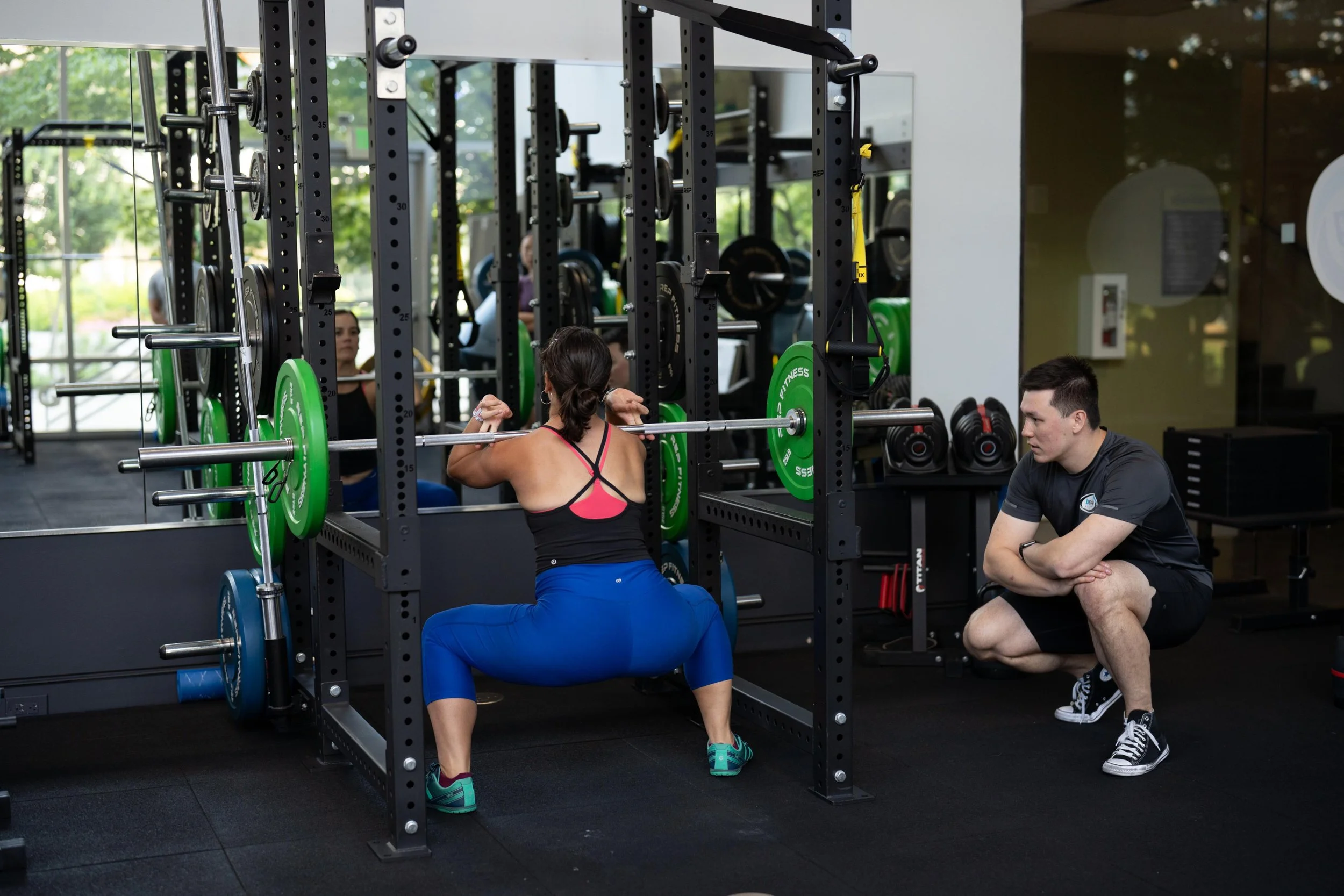Intro to Strength
Strength Training: What is it?
Strength training involves using the force of your muscles against resistance (also known as resistance training). Resistance can come from a variety of sources including dumbbells, kettlebells, bands, hydraulics, pulleys, rocks, logs, kegs, or even your body weight.
The resistance breaks down your muscles. As the muscles repair themselves, they come back stronger and more resilient.
Why is it important?
Muscle mass helps us maintain a healthy metabolism. The more muscle mass our body has, the more calories we burn throughout the day.
While trying to lose fat, many people forget the importance of muscle. Someone may lose 20 pounds by doing lots of cardio and cutting calories. Unfortunately, a lot of that 20 pounds is probably muscle. Now, with less muscle, their metabolism drops, meaning it’s easier to pack on that weight after returning to normal habits. They get frustrated when they realize their next attempt at fat loss will be even more challenging. It’s a vicious cycle.
How do we avoid losing muscle when we lose weight?
Strength training.
It can help maintain what you already have, and it can also increase the amount of muscle mass your body holds, which increases your metabolism.
Other benefits
Improved bone density
Improved insulin sensitivity (decreasing risk of type 2 diabetes)
Lower risk of injury
Improved self-esteem
Enhanced speed, power, balance, and agility
Improved body composition
Decreased blood pressure
Decreased bad cholesterol levels
WHEN IT COMES TO EXERCISE, STRENGTH TRAINING IS YOUR MOST POWERFUL TOOL IN THE GYM.
Better than cardio?
Cardiovascular exercise has a long list of benefits. It can certainly be helpful in your journey to health and fat loss. But focusing strictly on cardio can have drawbacks in the long run.
Most people say their goal is "weight loss," when in fact they actually mean "fat loss." While they may sound like the same thing, there is an important difference.
Weight can come from anywhere - fat, muscle, water. Heck, you could cut off a limb and say you lost weight. But fat loss is a more specific goal.
You could maintain the same weight on the scale over the course of three months. But in that time you may have lost 5 pounds of fat and gained 5 pounds of muscle. You're going to look and feel a heck of a lot better with the fat loss even though you didn't lose any weight.
Strength training does a great job of attacking this body composition issue. You can firm up your muscles, look leaner and feel stronger, without spending hours and hours on a treadmill.
When it comes to body composition (fat loss, muscle gain), Strength Training should be main course and Cardio should be the side dish.
How do I incorporate it?
Using bodyweight, barbells, dumbbells, kettlebells, or bands, move your body against resistance.
There are a lot of different ways to strength train. When it comes to efficiency, using circuits is your best bet.
Circuit training involves moving throughout different exercises, engaging different muscles. You can quickly get a full-body workout without wasting much time.
Strength training a minimum of two times per week will give you a good foundation and allow your body to make progress. Just make sure you're giving it some recovery (sleep, stretching, massage, etc.) in between workouts.
Let’s move some weight!
Your bStrong Team



